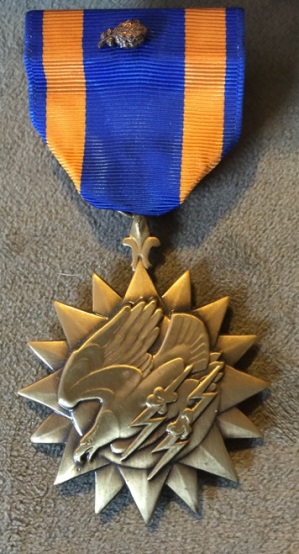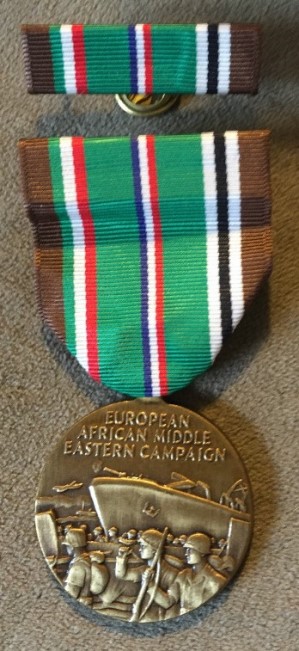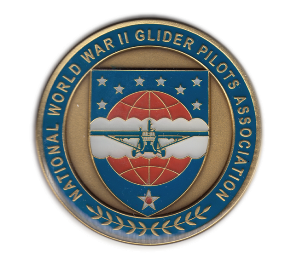National WWII Glider Pilots AssociationLegacy Organization of veterans National WWII Glider Pilots Association. Discover our History, Preserve our Legacy | ||
AWARDS - Is that a Bronze Star or a Bronze Star?
By Leon Spenser
|
The awards distribution can be very confusing. There are the awards for being in the campaign with no combat but support to the combat mission. The most confusing is caused by the military themselve by naming awards with the same names. The most confusing for our family members and relatives of WWII veterans deals with the words “bronze star” in the awards section of military documents. Some wrongfully interpret it to mean the “Bronze Star Medal” . The key word is MEDAL which was awarded for heroic or meritorious achievement, or service, while serving in a combat zone on the ground and not involving aerial flight. But in the document the words often only read "four Bronze Stars may now be worn". With the lack of the word MEDAL, (the word MEDAL would always be present when mentioning the Bronze Star Medal) the words mean Bronze Stars for service. They are very small stars awarded for participating in a campaign. It is a way to recognize the work the ground crew preforms in the support of a combat mission. There is also a considerable difference in the appearance of the awards. The star on the Bronze Star Medal is one inches in size while the Bronze Battle Star also known as Bronze Service Star is only 3/16 of an inch in size. The MEDAL has a ribbon and the other does not. The Bronze Star medal was initially authorized by Executive Order No. 9419 on February 4, 1944, for those persons serving in any capacity with the Armed Forces of the United States on or after December 7, 1941. The medal, designed by the firm of Bailey, Banks and Biddle, is in the shape of a five-pointed star. Mounted in the center of the star is a smaller raised star. The Bronze Star medal is the fourth-highest individual military award, and the ninth-highest by order of precedence in the United States Military. A bronze “V” is awarded to the recipient of a Bronze Star Medal for acts of valor in combat. Battle stars, sometimes referred to as campaign stars were awarded for service in two major areas during World War II, the Asiatic-Pacific Theater and the European-African-Middle Eastern Theater. For each major battle in either of these two geographical areas a Bronze Battle Star was awarded to those serving in the theater. When the number reaches five the four bronze stars were replaced by a silver star (not to be confused with the Silver Star Medal for gallantry in battle against the enemy). For more than five battles additional bronze stars are issued until the number reaches ten when you again replace the four bronze stars with a silver star, thus the recipient would wear two silver stars on his medal and ribbon. The battle stars are also worn on the accompanying ribbon worn on the Class A uniform. Battle stars were awarded for the following campaigns in the European-African-Middle Eastern Theater: 01. Egypt-Libya 11 Jun 1942 12 Feb 1943 Battle stars were awarded for the following campaigns in the Asiatic-Pacific Theater: 01. Philippine Islands 7 Dec 41 - 10 May 42 The second and subsequent awards of medals, such as the Bronze Star, Purple Heart, Air Medal, Distinguished Flying Cross, Silver Star, as examples, are in the form of bronze or silver oak leaf clusters rather than stars. Note the bronze oak leaf cluster on the adjacent Bronze Star Medal. If a recipient has received five awards the four bronze oak leaves are replaced by a single silver oak leaf cluster which represents five awards. So how were the pilots in the AAF recognized for their heroics and meritorious actions in aerial flight? In a letter from the Secretary of War to the Director, Bureau of Budget, dated 9 March 1942, the Secretary submitted a proposed executive order establishing the Air Medal for award to any person who, while serving in any capacity of the Army of the United States, distinguishes himself by meritorious achievement while participating in an aerial flight. The Air Medal was the Army Air Forces equivalent of the Army’s Bronze Star Medal.
|

Air Medal with an Oak Leaf Cluster.
 European Aftican Middle Eastern Campaign
European Aftican Middle Eastern Campaign
